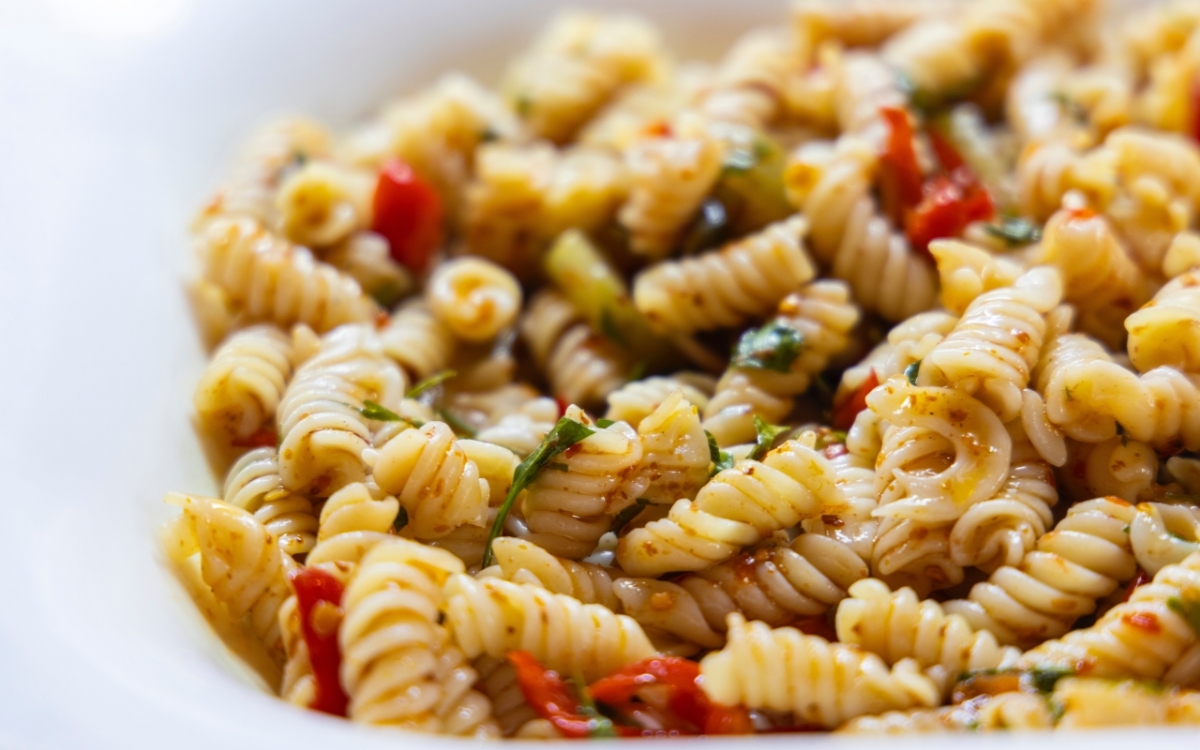Common Reasons Why Your Pasta Salad Sucks

Say goodbye to mushy pasta and limp vegetables - we've all been there. The pasta salad that looked so colorful on the picnic table turns into a sloppy mess. The pasta is mushy, the vegetables limp, and now you're wishing for a dog to sneak feed under the table.
It doesn't have to be this way. Years ago, I created recipes as head chef in a delicatessen where we made all kinds of cold food for the case. Before opening, I would check the salads we had made the day before and tweak them a bit.
I still get an involuntary twitch when I taste a soggy pasta salad, so I'm here to help you avoid some common pitfalls.
Make Pasta Right
If you're one of those people who say "pasta is pasta, buy the cheap stuff", I'm here to tell you that's not the case. Especially with pasta salads, you want the pasta to soak in an acidic bath for hours. Mediterranean-inspired pasta salads are usually made with short, dried pasta such as penne, shells, farfalle or fusilli. Don't waste fresh pasta for pasta salad, because it won't last. Cook it properly The tried and true method of cooking pasta, but with more salt than usual, is your best bet. Boil a gallon of water for a pound of pasta and add a teaspoon or so of salt in addition to the usual tablespoon of salt to really season your pasta. Cooling it will mute all the flavors, including the salt.
Toss the pasta, stir every few minutes to prevent it from sticking or cooking unevenly, and set a timer for one minute less than the package indicates. Then test it. Cooking pasta to be refrigerated has its own pitfalls. When testing your pasta, rinse a piece with cold water to cool it completely before taking that important bite. I learned early in my chef life that starches, whether potatoes, rice or pasta, can become more solid when cooked and cooled. Andrew Ross, a grain chemist and professor of crop and soil science at Oregon State University, told me why: "All starchy foods feel soft when bitten when hot, but can become firmer when cold. This is starch recrystallization or retrogradation. As the food cools, the starch molecules start to bond together and form a stronger matrix." This means that you should cook the pasta immediately after it has hardened, but it should not be limp.
How to Marinate
Best practice is to prepare the sauce, chop the vegetables and cook the pasta as close to when it will be eaten as possible. Drain the pasta and rinse with warm, not cold, water, then shake the pasta to drain well. Top the pasta with half of the sauce while it is still hot, then stir in the rest just before serving. Adding some of the dressing while the pasta is still hot helps the dressing bind to the pasta and give it a little more body. If you are making the pasta salad the day before, put the vegetables on one side of the bowl and the pasta with the dressing on the other, tossing to combine at the last minute. Back at the deli, tasting the pasta twice a day revealed how the bright flavors muted as the pasta absorbed liquids and everything oxidized. A quick application of the same sauce, or a mixture of oil, acid and a little salt, will revitalize the pasta.
Creamy sauces
The mayonnaise, sour cream and other creamy ingredients will also soak up while sitting in the pasta. After a day or two in the fridge, be sure to give the mixture a good stir to re-coat the pasta with the sauce and any liquid from your vegetables that has settled to the bottom and to liven up the flavors with a little acid and salt.
Never add these ingredients
Thinking of adding some black beans, walnuts or other dark-colored foods? Add them just before serving, otherwise the noodles sitting side by side in the fridge will absorb the pigments and cover the pasta with dark spots. Don't add soft cheese and delicate greens until just before serving either, as both will be destroyed by sitting in the acidic sauce.
If you want a hearty salad that will improve over time, make a whole grain salad. The same flavors you love in pasta salad complement cooked farro, whole oat groats, wild rice or other whole grains. As the grains soak in the dressing, they become more tender and flavorful - in a good way. A farro salad can keep in the fridge for four or five days without losing texture, and all you need is a little stir in the dressing.
Thanks for reading.









































